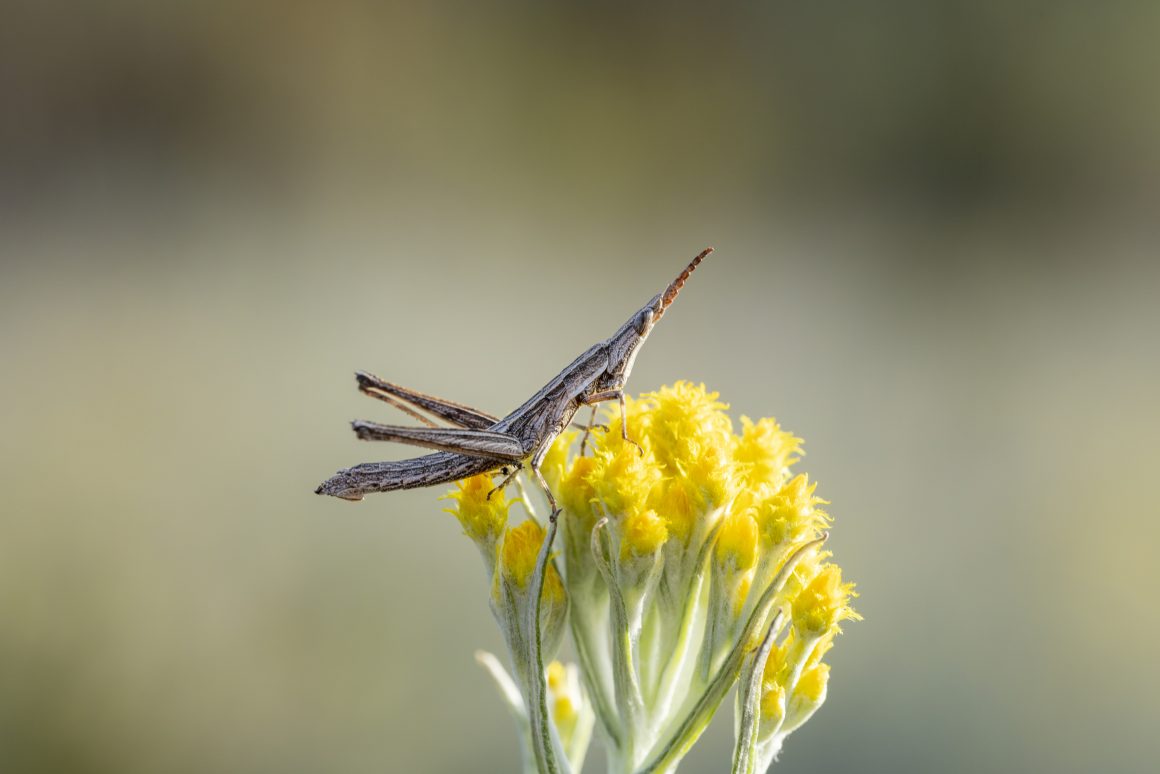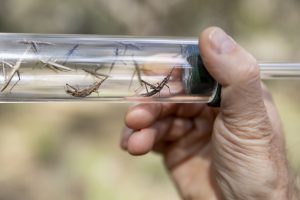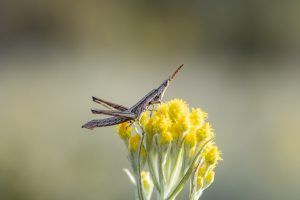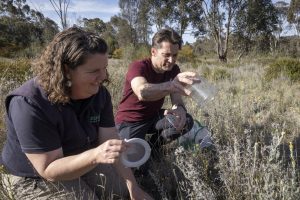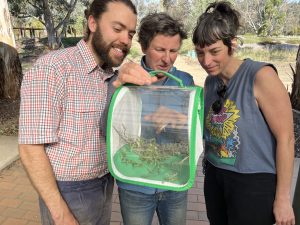“Working to re-establish these small yet significant grasshoppers to their former range is a profoundly rewarding experience that will help secure their existence into the future. The Arboretum is a fantastic meeting point for community to engage and learn about the grasslands and this unique grasshopper.”
Invertebrate Conservation Coordinator Zoos Victoria, Jessie Sinclair
One hundred endangered grasshoppers have made a homecoming to protected grasslands on Taungurung Country, where they haven’t been seen in six decades.
The Key’s Matchstick Grasshoppers – a species thought to have been extinct until their rediscovery in 2018 – were collected from a population near Tolmie, in east-central Victoria, by researchers from Zoos Victoria and the University of Melbourne.
The grasshoppers have been released to a grassland restoration area at the Euroa Arboretum in the hopes of establishing a haven for the precious invertebrate. This restored landscape includes a crucial mix of the native daisies and tussock grasses that provide food and shelter for the threatened species.
The newly established population will be monitored multiple times each year to track how they establish and spread through the grassland habitat.
The Key’s Matchstick Grasshopper was once widespread and abundant in New South Wales, the Australian Capital Territory and north-eastern Victoria; however, populations have drastically reduced due to habitat destruction since European colonisation. The species is clinging on in remnant patches of grasslands as small as 0.15 hectares.
The grasshoppers are flightless and are known to travel mere metres in their short lifespans. Each remaining population appears to be genetically distinct from populations that might only be a few kilometres away, also leaving whole populations vulnerable to fire and flood events.
Adult Key’s Matchstick Grasshoppers lay their eggs directly into the soil in spring and early summer. Nymphs hatch in summer and mature in winter for males and spring for females. At the end of the spring and early summer mating period, all adults will die off.
The Key’s Matchstick Grasshopper recovery trial is supported by the University of Melbourne, Zoos Victoria, Euroa Arboretum, Vic Roads and the Taungurung Land and Waters Council.
”By returning these over-wintering grasshoppers to suitable habitats we not only help them, but we also enrich food webs. This is because Key’s Matchstick can be a source of food for birds and lizards in the winter and early spring, when most other insects are yet to hatch.
University of Melbourne Professor Biosciences, Michael Kearney
When you next visit the Arb, grab a brochure from the Picnic Shelter to see what part you can play in saving the Key’s Matchstick Grasshopper.

